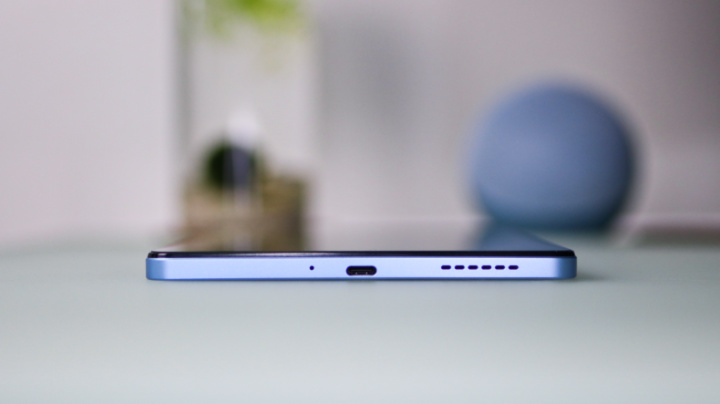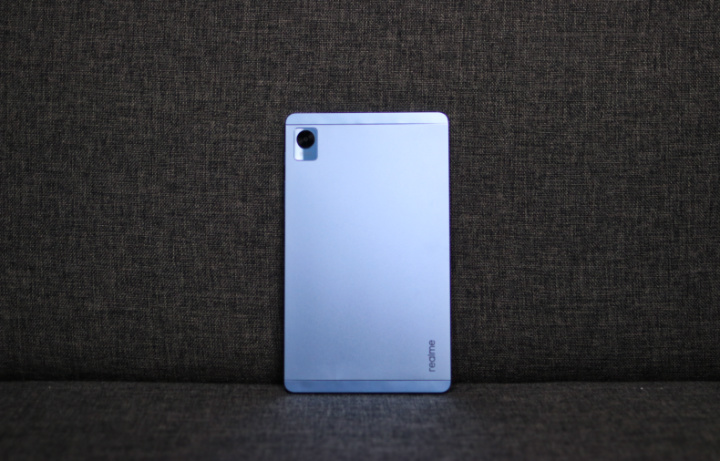In October last year, realme released the realme Pad here in the Philippines. And for a company that’s known for producing bang-for-the-buck smartphones, it looks like they did well with their first tablet that it is following it up with a smaller version, aptly called the realme Pad mini. Read our initial thoughts about it here.

Starting with the design, the realme Pad mini surprisingly feels premium for something considered as the smaller sibling of the original realme Pad. We were expecting an all-plastic body, but this one sports a metal chassis that is cool to the touch. The frame is flat on the sides, similar to what you’ll see in modern tablets. You can even make it stand if you want.

It features an 8.7-inch screen on the front with relatively thin bezels, although the top and bottom parts are a bit thicker, which is fine as we can rest our thumbs there when holding it in landscape. Placed above the screen is the 5MP front camera, which makes it intended to be used more in the portrait orientation.

From this position, we can find the volume and power lock buttons on the right, which is a bit awkward since we’re used to having the power button below the volume. They’re firm, clicky, but with a soft bump so it’s not noisy. In landscape, the power button is easy to reach, although the volume buttons can take a bit of an effort.

Back to portrait, found on the left side is the card tray for two nano-sized SIM cards and up to 1TB microSD card in a hybrid setup.

Up top, we have the 3.5mm audio jack and the loudspeaker.

While down at the bottom are the main microphone, USB-C port, and another stereo speaker.

Turn it on its back and you will see the slightly protruding camera module that houses the 8MP shooter. Found on the lower right is the realme branding.

One of the things you will like about the Pad mini is its, well, size. It’s not that thick at 7.6mm. It’s hefty, though, at 372g, so it can be a bit tiring to hold one-handed. But given its size, it’s like holding a notebook. You can easily hold it while watching a video or reading an ebook. You’ll also have no problem putting it inside a bag. Portability is one of its strengths.

Powering the realme Pad mini is a Unisoc T616 chipset with 2.0GHz octa-core CPU, Mali-G57 GPU, 3GB or 4GB of RAM, and 32GB or 64GB of storage. For the software, it runs on realme UI based on Android 11. We’ll know more about its performance in our full review during its local launch on April 4. So stay tuned for the pricing as well.
realme Pad mini specs:
8.7-inch WUXGA+ (1340 x 800) display, 179ppi
Unisoc T616 SoC
Mali-G57 GPU
3GB, 4GB RAM
32GB, 64GB storage
microSD up to 1TB (hybrid)
8MP rear camera
5MP front camera
Dual-SIM
4G LTE
WiFi 802.11 a/b/g/n/ac
Bluetooth 5.0
GPS, A-GPS, BDS, GLONASS
USB-C
3.5mm audio jack
Dual stereo speakers
realme UI for Pad (Android 11)
6,400mAh battery w/ 18W fast charging, reverse charging support
211.8 x 124.48 x 7.6mm
372 g
Grey, Blue

YugaTech.com is the largest and longest-running technology site in the Philippines. Originally established in October 2002, the site was transformed into a full-fledged technology platform in 2005.
How to transfer, withdraw money from PayPal to GCash
Prices of Starlink satellite in the Philippines
Install Google GBox to Huawei smartphones
Pag-IBIG MP2 online application
How to check PhilHealth contributions online
How to find your SIM card serial number
Globe, PLDT, Converge, Sky: Unli fiber internet plans compared
10 biggest games in the Google Play Store
LTO periodic medical exam for 10-year licenses
Netflix codes to unlock hidden TV shows, movies
Apple, Asus, Cherry Mobile, Huawei, LG, Nokia, Oppo, Samsung, Sony, Vivo, Xiaomi, Lenovo, Infinix Mobile, Pocophone, Honor, iPhone, OnePlus, Tecno, Realme, HTC, Gionee, Kata, IQ00, Redmi, Razer, CloudFone, Motorola, Panasonic, TCL, Wiko
Best Android smartphones between PHP 20,000 - 25,000
Smartphones under PHP 10,000 in the Philippines
Smartphones under PHP 12K Philippines
Best smartphones for kids under PHP 7,000
Smartphones under PHP 15,000 in the Philippines
Best Android smartphones between PHP 15,000 - 20,000
Smartphones under PHP 20,000 in the Philippines
Most affordable 5G phones in the Philippines under PHP 20K
5G smartphones in the Philippines under PHP 16K
Smartphone pricelist Philippines 2024
Smartphone pricelist Philippines 2023
Smartphone pricelist Philippines 2022
Smartphone pricelist Philippines 2021
Smartphone pricelist Philippines 2020
Christian says:
GEEKBENCH 2022
Realme Pad Mini vs Samsung Tab A8 2019
Unisoc T616 single 383, multi 1404
Helio P22 single 156, multi 750
Relame Pad Mini vs Samsung Tab A10 2021
Unisoc T616 single 383, multi 1404
Exynos 7904 single 276, multi 1022
Sources:
https://nanoreview.net/en/soc-compare/unisoc-tiger-t616-vs-samsung-exynos-7904
https://nanoreview.net/en/soc-compare/unisoc-tiger-t616-vs-mediatek-helio-p22